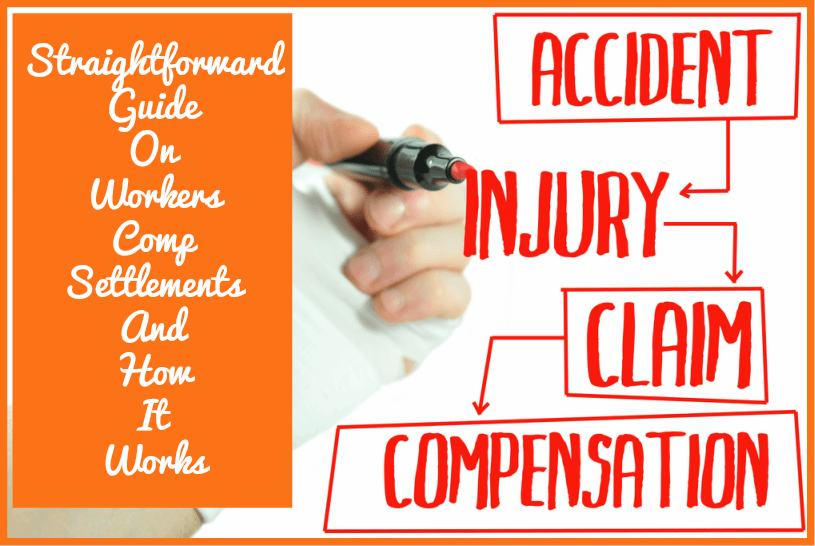
Straightforward Guide On Workers Comp Settlements And How It Works
In 2015 a total of $61.9 billion was paid out in workers comp settlements. These benefits were split almost evenly with $31.1 billion covering medical benefits and $30.7 billion covering lost wages compensation.
If you’ve experienced an injury or illness as a result of your employment, you’re probably wondering how you can receive your portion of this enormous payout. It all begins with filing a claim.
Once you file your claim, you’ll go through a settlement process. We’ve created this guide to help you understand what to expect and what you can negotiate for when it comes to the structure of your benefits payments.
The Purpose of Workers Comp
This is a type of insurance that’s required for employers to protect employees after a workplace injury. States require businesses of a certain size to carry workers compensation insurance.
Without this insurance, a business is liable for the injuries their employees experience while on the job. This means paying out of pocket for all work-related injuries. With workers compensation insurance, the employee can file a claim through insurance for recovery.
What Is a Workers Comp Settlement
If an employee gets injured and files a claim, your insurance company will make an offer for compensation. The employee has the right to accept or reject this offer.
If the employee rejects the offer, they can then pursue a monetary settlement with the assistance of an attorney. Workers compensation can provide compensation for disability, lost wages, and hospital bills.
The Process
Each state has its own regulations and requirements when it comes to workers compensation. So the exact process will vary depending on the state you’re in. The first step for every employee is to sit down with an attorney.
You and your legal counsel will determine what you believe your payout should total. Your payout total will include the various costs that you have experienced since suffering your injury or illness.
- Surgery
- Pain and suffering
- Lost wages
- Future lost wages
- Disability payments
- Attorney fees
- The state’s workers comp payout guidelines and relevant restrictions.
- Hospital bills
- Ambulance rides
You shouldn’t include these items as they aren’t covered by workers comp:
- Self-inflicted injuries or illness
- Injury from a fight or horseplay
- Injuries from your commute to or from work
- An injury you suffer while committing a crime
- Injury while under the influence of drugs or alcohol
- Injury while directly violating company policy
- Stress or other psychological injuries
Once you have a number in mind, your attorney will contact the insurance company. Assuming that the insurance company has already approved the claim, it’ll make a payment offer.
It’s now up to you, either accept the offer or reject it. If you reject, the negotiation process begins.
Your attorney and the insurance company will negotiate back and forth to come to an agreement. You’ll need to be able to provide proof to back up your claims.
Gather your medical bills, future treatment estimates, proof of lost wages. This documentation will give you negotiating strength as to why you need an amount larger than the insurance company’s initial offering.
Time Frame
Making a claim and having it settled is not a fast process. There’s no exact timeframe since every case is different. But it’s safe to assume that it can easily take over a year to complete the process from filing a claim to finalizing a settlement agreement.
If your claim is for a minor injury and relatively straightforward, then it could take as little as a few months. On the opposite end of the spectrum, severe injuries or a complicated situation can result in the process taking two years or more.
The Fees
Most workers compensation attorneys charge based on a specific percentage of your recovery. This means that the more compensation they win for you, the more they get paid. This may sound disconcerting, but it’s an incentive for the attorney to fight hard for your right to complete compensation for your injuries.
Most states have regulations for what percentage an attorney can charge. Typically it will be somewhere in the range of 15-25%. You’ll need to speak with potential lawyers and ask what their fee structure is.
You can include your attorney fees in your settlement total. This way, you ensure that the actual amount you receive will cover the total of your bills.
Possible Workers Comp Settlements
There are three different options the employee can accept as compensation. The employee can accept the initial insurance company offer.
They could pursue a lump sum settlement. Then a third option is to negotiate a structured settlement.
You can learn about the types of settlement payouts by speaking with an experienced workers compensation attorney.
Liability and No-Liability Settlements
Some states, such as Georgia, have different types of settlement agreements.
A liability stipulation is where both parties agree that your claim is legitimate and that your employer is liable for your injuries. Both parties agree that you deserve a payout for your injuries.
A no-liability stipulation is when you and the employer disagree about who’s at fault. The employer feels as though your injuries or illness don’t warrant recovery under workers compensation.
Despite this sentiment, the employer agrees to pay a certain amount of compensation anyway. Think of this as the “we agree to disagree” settlement.
Make Your Workers Comp Claim
Now that you’ve read this guide, you should have a solid understanding of the process, fees required, and possible workers comp settlements available.
If you’re injured while on the job, the best thing you can do is speak with a workers compensation attorney. They’ll be able to assess the validity of your claim, help you file a claim, and negotiate a settlement.
Browse our guides for more useful information on preventing, treating, and getting compensation for workplace injuries.
© New To HR


